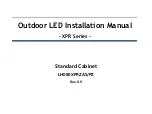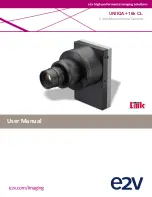
TrackSnap Manual
Model TS-DSC-P41-01
Page 8 of 12
Version
TS P41.2
This document comprises information provided by Suppliers and is
assumed to be correct.
Released
Inside Your TrackSnap Camera
PixController Main Board Features
Board can be mounted vertically or horizontally. The unique dual element PIR sensor enables the
camera to be used in any orientation.
External light port. This can switch up to a 4.2 amp supply for lights and IR LED arrays.
Dual LED’s for better board diagnostics. The unique LED’s design, super bright red control LED, and
green PIR LED is used on all of our motion sensing boards. The LED layout is designed to shine through
the PIR lens in your case.
Controls LANC Video Camcorder, Digital Cameras, and 35mm Cameras all on one board!
Fast re-trigger PIR! C
an be re-triggered within 1 second
With this you get features like continuous
filming as long as motion is present for LANC camcorder setups.
Fast and Slow camera start-up modes.
Allows you to use any kind of memory card in your camera.
Day, Night, or 24 hour operation setting.
Auto walk test mode on power up. The walk test mode will blink every time you walk into the PIR
detection area. It gives instant feedback.
Low battery level detection - the green PIR LED will blink when a low battery is detected.
10-Postion DIP switch so you can easily configure board settings.
Tiny board size. Fit a Sony DSC-P41 into a Pelican 1060 case with room to spare.
PIR sensitivity POT to adjust the PIR detection range.
Day/Night sensor POT to adjust the light detection level. There is a DIP switch setting in which you can
calibrate this setting. The red control LED will be on when it detects darkness and gives you continuous
feedback.
Auto PIR shut-down on low battery detection.
Minimises false photos when battery becomes low!
Reverse polarity circuit. This will protect your board if you install a battery backwards. There is an on-
board fuse to protect your investment!
Professionally built, assembled, and tested.
TTL Slave Flash trigger output. – To be used in conjunction with an external Slave Flash board. This
allows the use of very inexpensive Digital CMOS board cameras.






























